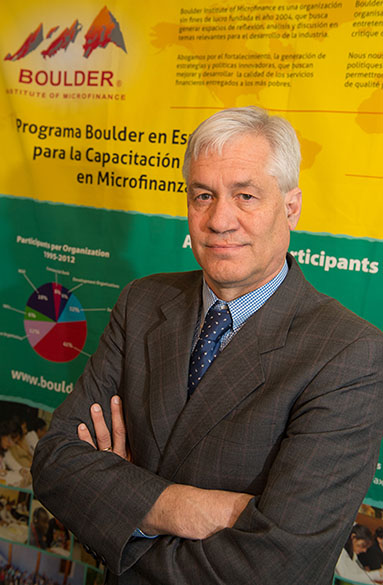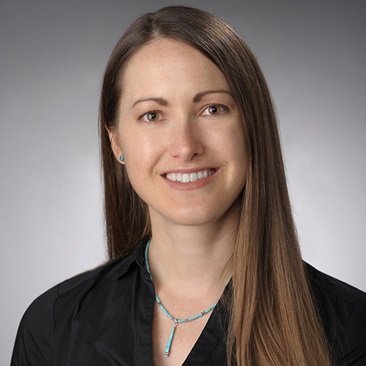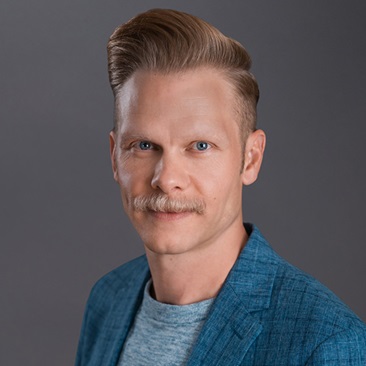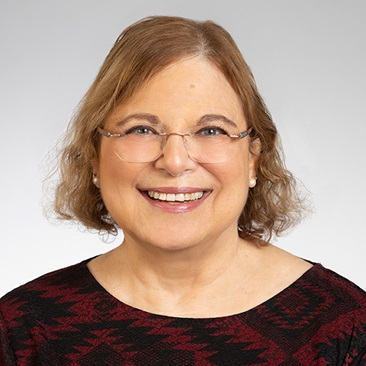Money in the Bank
June 25, 2021
Like roads, water, and electricity, Bob Christen believes basic financial services are a necessity at every in-come level. His Boulder Institute—now based in Syracuse—is working toward financial inclusion for the poor.
As a Peace Corps volunteer in Chile, Bob Christen worked as a cooperative extensionist charged with helping local farmers with crop production. But it didn’t take long for Christen, who’d grown up on an apple farm in Syracuse, to realize the Chilean farmers were producing crops just fine. Their problem was managing money.
The farmers made a regular practice of borrowing money to tide them over between seasons, and so risked losing their land due to indebtedness. “That’s where I became aware of the role of money in poverty — that managing money is as much a part of being poor as whether you generate any,” he says.
Thirty years later, Christen is one of the world’s leading authorities on providing financial services to the poor, having worked throughout the developing world designing and managing banking solutions for people largely living in poverty, and training thousands of others to do the same.
It’s known as microfinance — the provision of sustainable financial services (including credit, savings, transfer payments, and insurance) to segments of the population not reached by conventional banking. “It costs a bank about a dollar every time someone makes a transaction at a teller window, so banks don’t tailor products for someone that may only have $5 or $20 on deposit,” says Christen, who has consulted in dozens of countries. He spent six years as a senior advisor at the World Bank and another five as the director of Financial Services for the Poor?at the Bill and Melinda Gates Foundation.Since fall 2012, Christen has been a professor of practice in public administration and international affairs at Maxwell. He also remains at the helm of the Boulder Institute of Microfinance, an NGO he brought with him to Syracuse.
Since he started it with a group of colleagues in 1995, Boulder has become the premier executive training program in microfinance. Its training programs — offered each summer in Turin, Italy, and Santiago, Chile — pull together leading experts in microfinance from throughout the world to teach intense three-week courses. They draw government officials, finance regulators, and others interested in banking systems for people in poverty. The Institute has trained more than 4,500 professionals from 150 countries, in three languages (English, Spanish, and French). It has offices in Santiago, Marseilles, Seattle, and Boulder, but Syracuse is now its administrative home.
Bringing Christen to Maxwell is a game changer. “We’ve had folks who work in development finance,” says Ross Rubenstein, chair of public administration and international affairs, “but having someone with microfinance expertise, and with Christen’s stature, is an important addition.” Christen, he says, fits the standards for professors of practice: “people with very high-level experience who’ve played leadership roles in large organizations. As faculty members they are actively engaged with students and yet continue to do all of the great things that brought them to our attention to begin with.”
Christen believes it’s a mutually beneficial arrangement: He brings a type of expertise to Maxwell that students are eager to have. He exposes talented future professionals to microfinance. And, in return, some students end up helping him professionally at the Boulder Institute. He’s already had a handful of Maxwell interns and has hired several recent Maxwell grads as program managers. “It’s a natural fit,” he says.

Imagine you live in a small village with no bank, so the way you build equity is by investing in livestock. Then your child gets sick. In order to pay a doctor, you need to sell a goat. (The goat is worth more than the doctor bill, but you can’t sell only part of a goat.) And, because this is a small village and everyone knows your predicament, you probably won’t get the best price for your goat.
This is the scenario Professor Christen lays out for the 25 students in his development finance course. It’s a diverse group — students from 16 countries.
“Who here has seen a rice bin?” Christen asks. A half-dozen students raise their hands. About a billion people globally live in households that earn less than $2 a day, many with no means to save money beyond hiding it under their mattress or in a rice bin.
In the developing world, savings is the least offered financial service but the one most in demand. “Everyone, no matter how poor, wants the ability to save for his or her future,” Christen says.
“All of us have important goals in life. . . . Poor people share those goals but don’t have any formal financial tools to accomplish them.”
— Bob Christen, Maxwell faculty member and director of the Boulder Institute of MicrofinanceFor decades, the focus of the microfinance industry has been on microcredit: small loans given without collateral to individuals, typically used to start business ventures. One of the pioneers was the Nobel-prize winning Grameen Bank, founded in Bangladesh. Despite Grameen’s huge success as a money lender, Christen says it was clear early on that more people wanted the ability to save money than wanted a loan. In 1982, Grameen began offering savings accounts and by 2004 the bank’s deposit portfolio surpassed its loan portfolio.
That’s not an anomaly. Christen points to Bank Rakyat in Indonesia, or to Bolivia, where microfinance institutions have grown to offer a wide variety of products. As a result, those institutions have the largest percentage of clients in those countries’ banking systems. “Some of the strongest banks in Bolivia are banks that serve the poor,” he says.
Christen believes that the notion of providing small loans to pull individuals out of poverty is paternalistic. The microfinance industry, he feels, has matured beyond it. “I’m more interested in how you build systems that serve hundreds of millions of people, in building banking systems for the bulk of the population in a given country,” he says.
At the Gates Foundation, Christen administered $600 million in grants, given to microfinance institutions to develop efficient systems for small savings accounts in developing, southern hemisphere nations. While it will take several years to see how those investments pay off, he is committed to the cause.
“All of us have important goals in life: to stay healthy, to educate our children, to keep a roof over our heads. Poor people share those goals but don’t have any formal financial tools to accomplish them: health insurance, a pension, or a savings account,” says Christen. “To me, providing basic access to financial services is like infrastructure, the way you would provide a road into a rural area or provide electricity or drinking water.”
He’s got support for that thinking. Last year, the MasterCard Foundation announced a five-year, $11.3-million grant to the Boulder Institute, which in part funds an annual symposium on financial inclusion. The first, held in Turin in July, was titled “Clients at the Center” and brought together experts from microfinance organizations, financial service providers, and consulting groups to help design client-driven financial institutions. “Now that the sector is developed, our aim is to re-engage with what clients really want and lead a re-thinking about the next generation of products,” says Christen.
The MasterCard grant also provides support for building the Institute itself, including research, upgrading the current training programs, and adding administrative staff. Christen couldn’t be happier to be doing it from Syracuse. “I was born there,” he says pointing to Crouse Hospital out his Maxwell office window. “And I went to church there,” he says, pointing in the opposite direction. He’s also a former Maxwell School student, having completed a graduate certificate in regional planning after his service in the Peace Corps and before earning a master’s in development finance from Ohio State.
Christen divides his time between the Maxwell School and the Boulder Institute offices, just a few blocks away. Although he travels for the programs themselves and to give papers, it’s a different pace than his globe-trotting consulting days, when he was typically in a different city every week.
“Everyone, no matter how poor, wants the ability to save for his or her future.”
— Bob Christen, Maxwell faculty member and director of the Boulder Institute of MicrofinanceHe recently wrapped up a 20-month stint as the principal strategic advisor for the largest microfinance program in Latin America, which required a monthly trip to Mexico. “I love that work but it’s not very compatible with a teaching schedule,” he says. “But my wife says that as soon as I get even a glimmer of a little free time I sign up for more stuff, so I’ve got to be careful.”
Christen anticipates building a portfolio of Boulder Institute programming in Syracuse, possibly running one of the training programs through Maxwell’s Executive Education Program. But regardless of the location, the vision remains the same: expanding the range of financial services to connect poor people to the formal economy.
“The amount of subsidy required to do financial services for the poor is quite small compared with universal education or vaccinating everyone in a country,” says Christen. “It’s all about giving people the formal tools to protect themselves from vulnerabilities and achieve their goals.”
By Renée Gearhart Levy
This article appeared in the winter 2014 print edition of Maxwell Perspective; © 2014 Maxwell School of Syracuse University. To request a copy, email maxwellperspective@syr.edu.
Related:
Related News
Commentary

Jul 25, 2024
Commentary

Jul 24, 2024
Research

Jul 24, 2024
